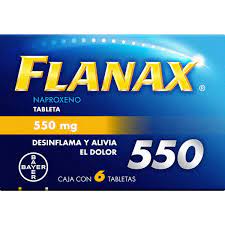How Many Hours Should I Take Flanax?

What is Flanax?
Flanax is a brand of naproxen sodium, used to treat minor aches and pains such as headache, back pain or toothache. Naproxen belongs to a class of medications called nonsteroidal anti-inflammatory drugs NSAIDs. NSAIDs are a type of medications that work by blocking your body’s production of certain natural substances that cause inflammation.
Flanax Pain Reliever Tablets can also be used to treat pain associated with a common cold and certain symptoms of arthritis and menstrual cramps.
How to use Flanax
If you are taking the over-the-counter product, read all directions on the product package before taking this medication. If your doctor has prescribed this medication, read the Medication Guide provided by your pharmacist before you start taking naproxen and each time you get a refill. If you have any questions, ask your doctor or pharmacist.
Take this medication by mouth as directed by your doctor, usually 2 or 3 times a day with a full glass of water (8 ounces/240 milliliters). Do not lie down for at least 10 minutes after taking this drug. To prevent stomach upset, take this medication with food, milk, or an antacid.
The dosage is based on your medical condition and response to treatment. To reduce your risk of stomach bleeding and other side effects, take this medication at the lowest effective dose for the shortest possible time. Do not increase your dose or take this drug more often than directed by your doctor or the package label. For ongoing conditions such as arthritis, continue taking this medication as directed by your doctor.
For certain conditions (such as arthritis), it may take up to two weeks of taking this drug regularly until you get the full benefit.
What are side effects associated with using Flanax?
Common side effects include:
- abdominal pain
- constipation
- dizziness
- drowsiness
- headache
- heartburn
- nausea
- swelling
- abdominal bleeding
- abdominal perforation
- lightheadedness
- abdominal ulcers
- fluid retention
- diarrhea
- inflammation of the mucous membrane of the mouth
- diverticulitis
- difficulty breathing
- hearing disturbances
- elevation of serum alanine aminotransferase or aspartate aminotransferase
This list does not contain all possible side effects and others may occur. Check with your doctor or other medical professional for additional information about side effects or other concerns about conditions related to your health.
Flanax Safety Information
You may have heard that Flanax (naproxen) is safer for the heart compared to other NSAIDs like ibuprofen, diclofenac, meloxicam, or celecoxib; however, this is a controversial topic. The FDA has determined that the available studies are not robust enough and were not designed to determine if one NSAID was safer than any other with respect to heart safety (cardiovascular thrombotic events). In addition, when determining the safety of a drug for a patient, risk factors such as other medical conditions, other medications and drug interactions, doses needed, and duration of treatment need to be taken into consideration. The FDA has stated that “based on available data, it is unclear whether the risk for cardiovascular thrombotic events is similar for all non-aspirin NSAIDs.”
Since 2005, labeling laws have required a boxed warning on all NSAIDs alerting of increased cardiovascular risks, like heart attack and stroke. That warning was a result of the withdrawal of the NSAID Vioxx (rofecoxib) from the market in 2004 because of a notable increased risk of heart attack among Vioxx users. Celebrex (celecoxib), another COX-2 selective NSAID, is still on the U.S. market.
The heart warning on all NSAID labels state that this class may cause an increased risk of serious and sometimes fatal heart and blood vessel problems (eg, a heart attack, stroke). The risk may be greater if you already have heart problems or if you take NSAIDs for a long period of time. However, a 2017 study found the heart risk was increased with high doses in the first month of use. Additionally, the label warns that NSAIDs should not be used (they are contraindicated) right before or after coronary artery bypass graft (CABG) surgery.
Boxed warnings on naproxen labels also alert patients to important side effect risks for stomach and intestine bleeding. NSAIDs may cause an increased risk of serious and sometimes fatal stomach ulcers and bleeding. Elderly patients (those over 65 years of age) may be at a greater risk, and this effect can occur without any warning signs. NSAIDs may worsen intestinal diverticulitis. Patients with a history of diverticulitis should speak with their doctor about the safety of using of NSAIDs.
You should avoid using aspirin and other anticoagulants with NSAIDs, for example:
- warfarin
- Eliquis (apixaban)
- Xarelto (rivaroxaban)
- Pradaxa (dabigatran)
Check with your doctor before you combine these medications with NSAIDs, as you may increase your risk for serious bleeding.
Flanax (and all other NSAIDs) should be avoided in late pregnancy (usually during the third trimester) because it may cause premature closure of the ductus arteriosus, which can lead to right heart failure and death of the fetus.





